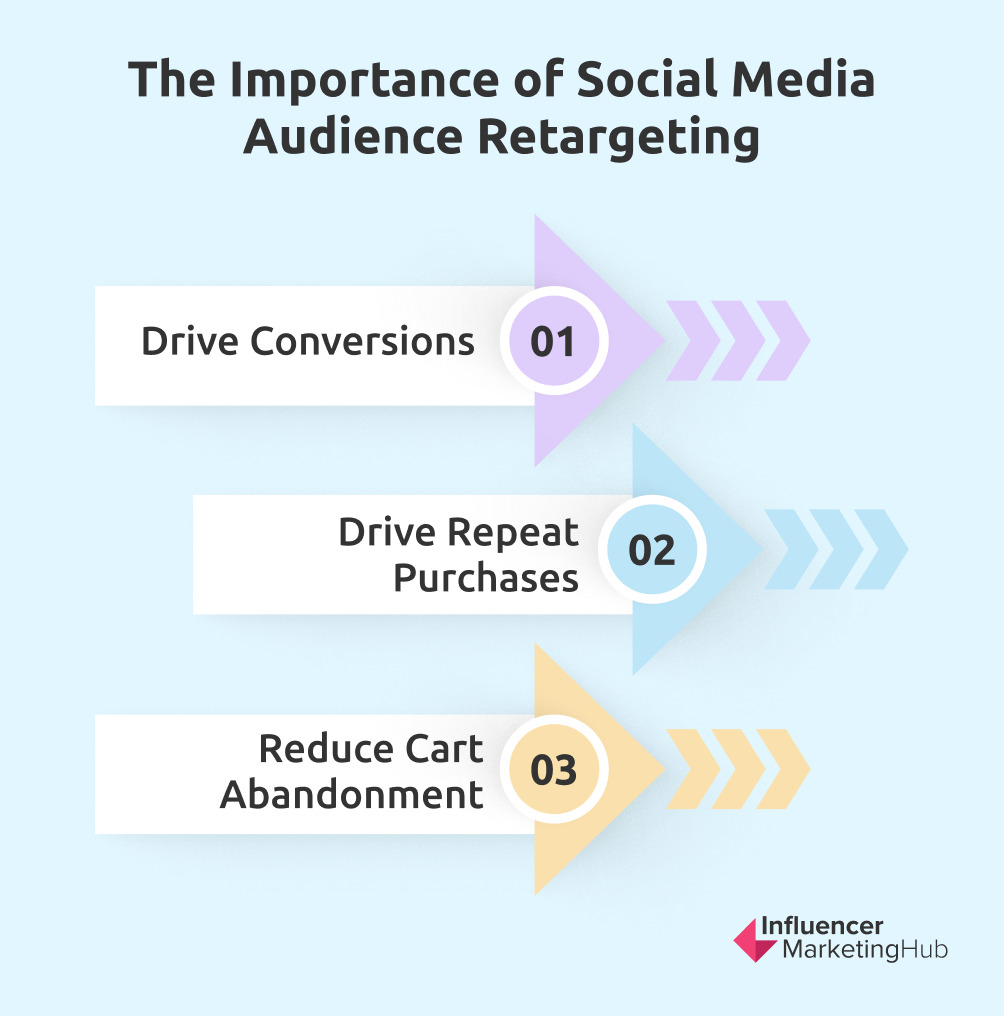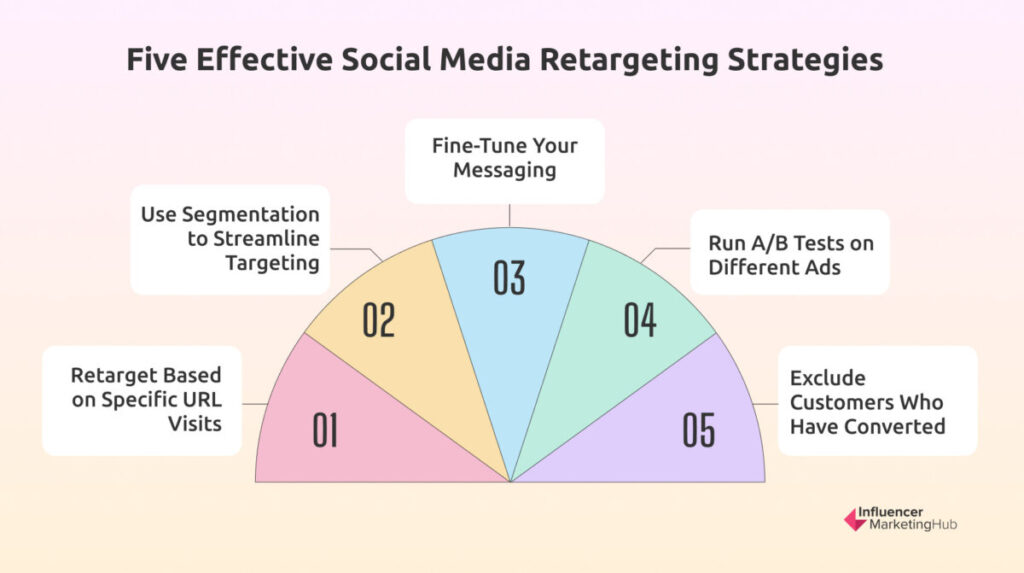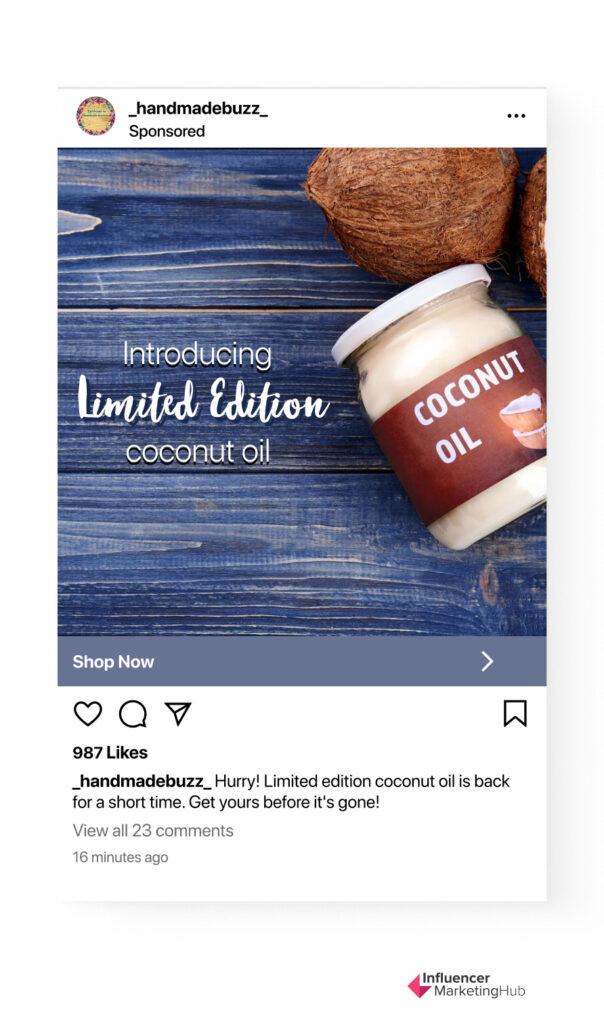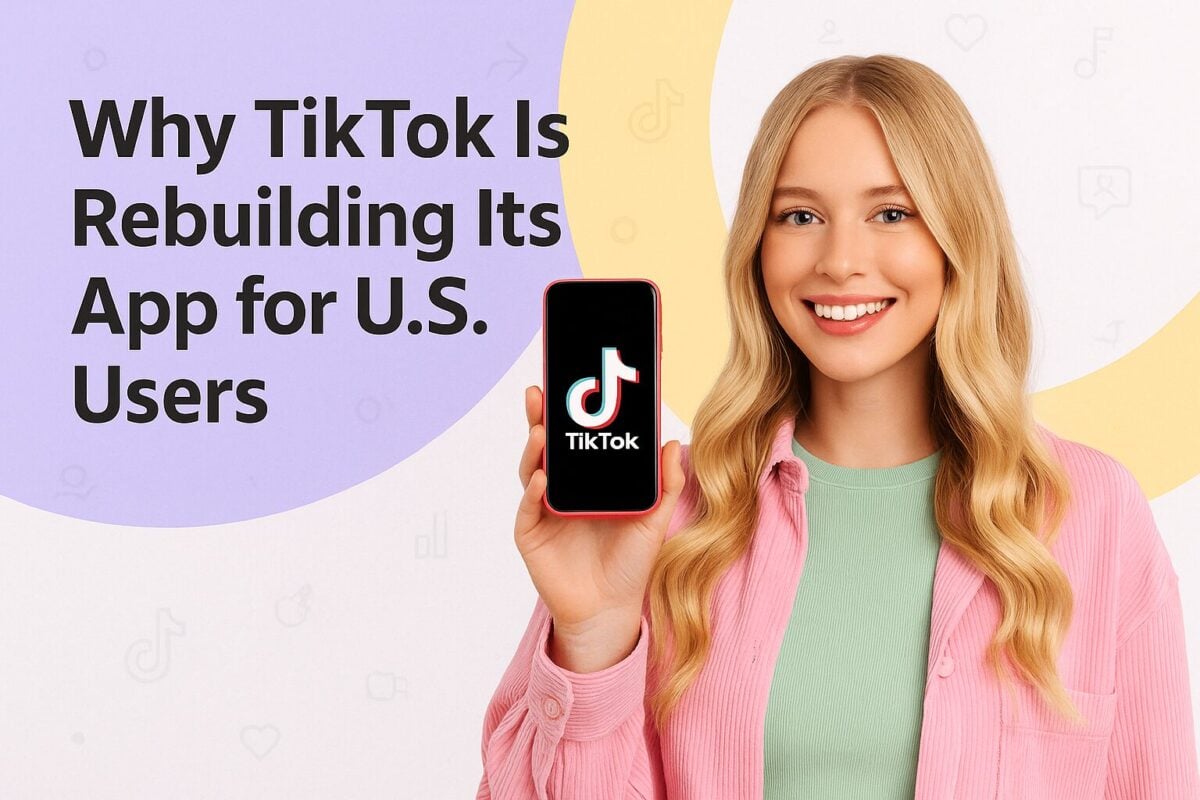Ever come across an ad on social media for the same product you’ve been eyeing on another website? That’s social media retargeting in action, and it’s one of the most powerful ways to drive conversions for ecommerce brands. It helps you reengage lost customers and remind them to complete their purchases, allowing you to finally close the sales that didn’t happen.
So how do you retarget customers on social media? In this post, we break down x effective social media retargeting strategies to exponentially drive sales for your brand.
5 Effective Social Media Retargeting Strategies:
What is Social Media Retargeting?
Social media retargeting is the practice of serving tailored ads through social media platforms to people who’ve interacted with your brand before. This interaction may have happened by clicking on your ad, visiting your website, adding items to their cart, or even making purchases in the past. Either way, the point is to reengage people who are familiar with your brand and may have shown some interest in buying your products.
How Social Media Retargeting Works
Retargeting on social media works by installing a pixel from the social media platform to your website. This pixel will capture visitor data, mostly focusing on how they interact with different pages on your site. The data is then used to deliver ads tailored according to these interactions, making them highly relevant to each user and improving the chances of conversion.
So for example, if someone has been browsing the category page for men’s watches, you could serve a Facebook retargeting ad that highlights some of the best-selling watches from that category. If they looked at a few specific products, the ad could present them with an exclusive discount for those items. Or if someone added an item to their cart but never went through with the purchase, the ad will remind them about “forgetting” something in their cart.
Why Retarget Your Audience on Social Media?

From what you can see so far, it’s pretty clear that social media retargeting ads can be highly beneficial for businesses. But how exactly can your brand benefit from social media retargeting? Let’s take a look at some of the main reasons why you should retarget your audience on social media.
Drive Conversions
Social commerce is huge right now, with more and more people using social media to find purchase inspiration or even make direct purchases. In fact, 82% of shoppers have discovered a product on social media and made a purchase directly on their phones. So it’s safe to say that the channel influences purchase decisions and drives conversions. By using social media to target your audience with tailored ads, you could effectively improve your conversion rates.

Source: businessofapps.com
Remember that you’re not serving just any ad with social media retargeting. Instead, you’re personalizing the ads to fit the needs, interests, and buying behaviors of your audience. This means that the ads they’re seeing are highly relevant to them, which also means that they’re more likely to convert.
Drive Repeat Purchases
You may have had plenty of customers who didn’t become repeat customers. This isn’t always because they had a bad experience or disliked your brand. It could simply be because they forgot about your existence, which means a quick reminder is all you need to bring them back. That’s where social media retargeting ads come in, allowing you to stay top-of-mind for past customers and reminding them of your existence.
Retargeting ads on social media would be a great way to entice past customers to come back with exciting discounts and offers. You could also take advantage of their browsing behavior and buying history to promote new products in categories that they seem to love. This ensures that the ad is relevant to their needs and interests, which makes them more likely to return.

Reduce Cart Abandonment
Not everyone who adds items to their cart will go through with their purchase. According to the latest shopping cart abandonment stats, about 80% of U.K. and U.S. mobile shoppers abandon their carts. People might do this for several reasons–whether it’s due to unexpected shipping costs or slow delivery times. Some may even abandon their carts because the website made it mandatory to create an account.
But some may simply be saving the items to buy at a later date. The stats mentioned above showed that about one-third of U.K. shoppers ended up buying the same item from the same website at a later date. That said, not everyone will remember to come back to complete their purchase.
Social media retargeting is an effective way to remind those shoppers that they have items left in their carts and reduce abandonment rates. Some may even sweeten the deal with discount codes that would entice those shoppers to come back and go through with their purchases.

5 Social Media Retargeting Strategies

Now that you’re convinced of the benefits of social media retargeting for your brand, it’s time to focus on the practical aspects. Here are five social media retargeting strategies that will help you get a strong start.
1. Retarget Based on Specific URL Visits
While you can serve retargeting ads to everyone who ever visited your website, this isn’t necessarily going to yield the results you need. Keep in mind that not everyone who landed on your site is interested in buying. And even if they are, they may not be ready to buy yet. So this approach is way too broad to deliver the kind of returns you’re expecting.
Instead, get more granular with your retargeting efforts by serving ads based on specific URL visits. This would involve retargeting visitors who spent some time engaging with a specific URL on your website–whether it’s a blog post, a product category page, or even a product page. You’ll be personalizing the ads based on the unique actions they took on your site. By doing this, you can narrow your targeting a little bit and ensure that you’re delivering highly relevant ads to each user.
Let’s say you provide an SEO platform that comes with a comprehensive set of features. Beyond basic SEO, it can help with content marketing, link building, and competitor analysis. Visitor X lands on your site and starts checking out the pages dedicated to your content marketing tools. Meanwhile, visitor Y comes in and checks out your link-building features. Serving the same generic retargeting ad for an all-in-one SEO tool to these two visitors may not necessarily have the kind of impact you’re expecting.
Instead, visitor X will get a retargeting ad that focuses on your powerful content marketing capabilities. And visitor Y will get a retargeting ad that highlights the platform’s link-building capabilities. This ensures that you’re retargeting visitors with ads that specifically address their needs and preferences, which will make them more likely to pay attention and eventually convert.
Similarly, if you’ve recently checked out the advertising tools on LinkedIn Marketing Solutions, you may get an ad like this. As you can see, the ad is helping to establish the value of LinkedIn’s ad tools by presenting a case study of a company that’s actually benefited from using them.
2. Use Segmentation to Streamline Targeting
Remember that your visitors are at different stages of the buying journey, meaning that they’re not all ripe for conversion. Sure, some may be just looking for that final push, while others may still be making comparisons. Some may even have bought from your brand many times before but haven’t returned in a while. So it’s important to make sure that your retargeting efforts are segmented according to the different stages of the buying journey.
This would involve segmenting your visitors according to their past behavior and buying history instead of grouping them all together. You’d then need to customize the ad according to the needs of each segment. For example, someone who still seems to be in the consideration stage may be looking for a free trial to get closer to a purchase decision. Meanwhile, past customers may just need a reminder about what’s new in your store.
3. Fine-Tune Your Messaging
For your retargeting ads to generate results, you need to make sure that you’re getting the right message across. This would involve fine-tuning your messaging and ad copy so that it appeals specifically to the people you’re targeting. The goal is to enhance the relevance of your social media retargeting ads and entice them to take further action.
Instead of reusing the same generic message across all your retargeting ads or simply mentioning the name of the product, try positioning the product or offer in a way that adds value to the person being targeted. For example, you could highlight the problem or pain point and then mention how the product addresses it. Similarly, in the case of cart abandonment ads, you could even create a sense of urgency by offering a discount code that’s only applicable for a limited period of time.
If you’re targeting existing customers, you could invite them to check out the latest products and exciting new deals that they can’t afford to miss. Or you might even want to highlight some of the most in-demand items that are finally back in stock, as you can see in the following ad.

4. Run A/B Tests on Different Ads
Sure, retargeting ads may be effective, but that doesn’t automatically make all retargeting ads effective by default. You still need to run lots of tests and try different ad variations to see which ones can deliver the best results. Make sure you run an A/B test on different ad variations and placements for each of the segments you’re targeting so you can get the best results across all your campaigns.
You’d need to test how different images and ad creative variations get a response from the audience. Moreover, headlines, ad copy, and calls to action will also need to be tested to see which one generates the biggest impact on the audience you’re targeting. Don’t forget to test the effectiveness of campaigns for different URL visits so you can understand which pages seem to be frequented the most by your top-converting customers.
Similarly, you’d also want to test different offers and lead magnets to understand what appeals the most to your audience. For instance, you may notice that free ebook downloads seem to generate more conversions than free trial offers among your consideration stage visitors. In this case, you can tell that people prefer to get free products instead of immediately starting a trial. You can then come up with other lead magnets such as free reports and templates that will help you nurture them on their purchase journey.
5. Exclude Customers Who Have Converted
Imagine buying something from a certain website only to get served an ad for the same product you bought even several weeks after your purchase. It can easily get annoying to see the same thing over and over again, especially when you no longer need it. This can put a damper on the customer experience and may deter many from coming back for a repeat purchase.
So make sure to instantly exclude customers from a specific campaign once they’ve already converted. This doesn’t mean you should never include them in future retargeting campaigns again, but rather than you need to switch things up and serve them fresh recommendations after some time.
The new campaign may be related to some of the things they’ve already bought before or the category pages they’ve checked out in the past. For instance, you may deliver ads in a relevant category as soon as you’ve added new items to the collection. Either way, switching things up can help to improve their experience and may compel them to come back for more.
Win Big with Social Media Retargeting
With the right strategies, social media retargeting is an effective way to win over new customers and entice existing customers to come back again. It can help you stay top-of-mind, drive conversions, and reduce cart abandonment rates, which will eventually contribute to your brand’s bottom line and boost your growth. So make the most of the strategies provided above to start leveraging social media retargeting for your brand.



